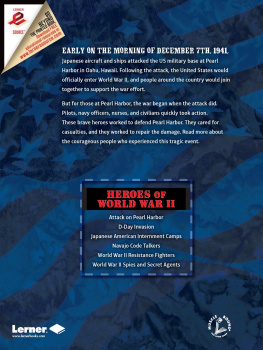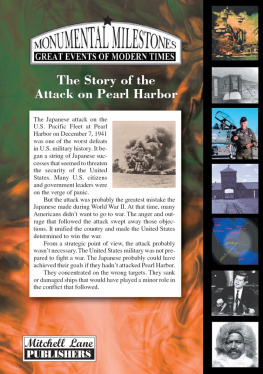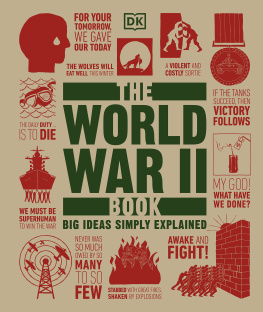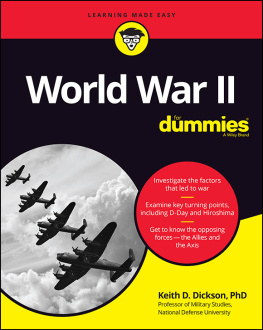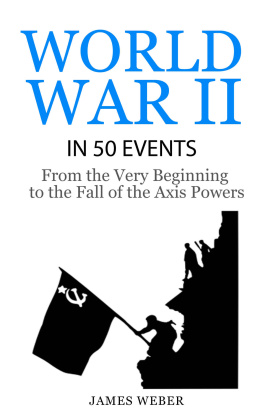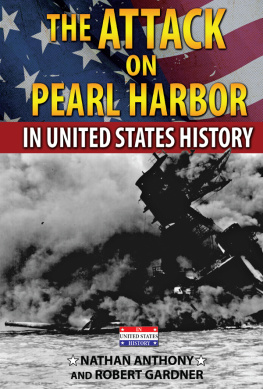
E-book published in 2012 by Encyclopdia Britannica, Inc., in association with Arcturus Publishing Limited, 26/27 Bickels Yard, 151-153 Bermondsey Street, London SE1 3HA. Britannica, Encyclopdia Britannica, and the Thistle logo are registered trademarks of Encyclopdia Britannica.
Reprinted in 2009
This edition first published by Arcturus Publishing
Distributed by Black Rabbit Books
123 South Broad Street
Mankato
Minnesota MN 56001
Copyright 2008 Arcturus Publishing Limited
All rights reserved
Library of Congress Cataloging-in-Publication Data
Harris, Nathaniel, 1937
World War II / by Nathaniel Harris.
p. cm. -- (Timelines)
Includes bibliographical references and index.
ISBN 978-1-61535-612-6 (e-book)
1. World War, 1939-1945--Juvenile literature. 2. World War, 1939-1945--Chronology--Juvenile literature. I. Title. II. Title: World War 2. III. Title: World War Two. IV. Series.
D743.7.H37 2007
940.53--dc22
2007007556
9 8 7 6 5 4 3
Series concept: Alex Woolf
Project manager and editor: Liz Miles
Designer: Simon Borrough
Picture researcher: Liz Miles
Consultant: James Vaughan
Cartography: The Map Studio
Picture credits:
Corbis: cover (Corbis), 4, 5 (Bettmann/Corbis), 7 (Corbis), 8 (Hulton-Deutsch Collection/Corbis), 9 (Corbis), 10, 11 (Hulton-Deutsch Collection/Corbis), 14 (Corbis), 15 (Dmitri Baltermants/The Dmitri Baltermants Collection), 17 (Corbis), 19 (Corbis), 20, 21, 22 (Bettmann/Corbis), 23, 27 (Corbis), 28 (dpa/Corbis), 29 (Bettmann/Corbis), 30 (Bettmann/Corbis), 31 (Corbis), 32 (Hulton-Deutsch Collection), 33, 34 (Corbis), 37 (Bettmann/Corbis), 38 (Hulton-Deutsch Collection/Corbis), 39 (Bettmann/Corbis), 42 (Yevgeny Khaldei/Corbis), 43 (Bettmann/Corbis), 44 (Corbis), 45 (John Van Hasselt/Corbis Sygma).
TopFoto: 12, 13 (TopFoto), 18, 24 (Topham Picturepoint), 25 (TopFoto), 26 (Topham Picturepoint), 36 (2004 Topfoto), 40 (2005 Topfoto/AP), 41 (2004 TopFoto).
Contents
Munich Agreement
29 S EPTEMBER 1938
On this day, four leaders met and reached an agreement at Munich in southern Germany. They were Neville Chamberlain and Edouard Daladier, the prime ministers of Britain and France; the German dictator Adolf Hitler; and Benito Mussolini, dictator of Italy. The agreement ended a crisis that might have led to a European war.
The crisis was caused by German demands directed against Czechoslovakia (now separate states, the Czech Republic and Slovakia). Hitler claimed that the 3 million Germans who lived in Czechoslovakia were being persecuted; he demanded that the areas in which they lived should be transferred to Germany. Though alarmed by Hitlers attitude, neither Britain nor France wanted war. Chamberlain took the lead in negotiating personally with Hitler. Finally, the four-power meeting was arranged and Hitler got his way. The Czechs were told that they must give up large areas of their country, and they unwillingly obeyed.
C RISES OF THE 1930s
Munich was only one of several crises in the 1930s. Germany had lost World War I (19141918) and had been harshly treated by Britain, France, and the other victors. Hitler, German dictator from 1933, worked to restore Germanys position in Europe, but he also had his own grandiose plans of conquest. He rearmed Germany and scored a series of foreign policy triumphs based on righting real or imaginary wrongs done to Germany. Feeling that some German grievances were justified, the British and French followed a policy of appeasement (making concessions). Chamberlain believed that at Munich he had satisfied Hitler and secured peace in our time.

Leaders at the Munich conference. From left to right: Chamberlain, Daladier, and the dictators Adolf Hitler and Benito Mussolini.
C HANGING ATTITUDES
Most British and French people supported Chamberlain. But Hitlers next move started to change their minds. He engineered the breakup of Czechoslovakia and then bullied the Czechs into accepting German rule, disguised as a protectorate. It was now obvious that Hitler was not just righting wrongs but was driving aggressively east. When he began to threaten Poland, Britain and France issued a guarantee that if Poland was attacked, they would come to its aid.
TIMELINE | T HE PATH TO WAR 19191939 |
1919 | Germany is harshly treated following World War I. |
October 29, 1929 | The American stock market crash triggers a world economic crisis. Germany is particularly hard hit. |
1931 | Japan seizes the Chinese province of Manchuria. |
January 30, 1933 | Adolf Hitler becomes Fhrer (leader) of Germany. |
1935 | Italy conquers Ethiopia. |
March 7, 1936 | German troops enter the Rhineland, German territory demilitarized after World War I. |
1937 | Japan begins an all-out war against China. |
March 12, 1938 | Hitlers forces enter Austria, which is united with Germany. |
September 29, 1938 | The Munich Agreement. |
March 1939 | Hitler engineers the breakup of Czechoslovakia. Chamberlain issues an Anglo-French guarantee to Poland. |
Fascism in Italy
From 1922, Benito Mussolini ruled Italy. His political doctrine, fascism, was strongly antidemocratic, glorifying the all-powerful leader, obedience to the state, and making war. Strength was good, weakness despicable.
T HE RISE OF FASCISM
In the 1920s and 1930s, fascism found some followers in many countries. The most formidable were Hitler and his Nazi Party. The Nazi form of fascism included a poisonous racism. To Hitler, the Germans were a master race who should enslave inferior peoples, such as the Slavs of Eastern Europe, and wipe out supposedly evil groupsabove all the Jews.

C ROSS-REFERENCE
W ARS OF
AGGRESSION: PAGES 17
From 1931, Japan, similarly militaristic in outlook, waged a savage war of conquest against China. Germany, Italy, and Japan would become allies, known as the Axis. World War II would be, in part, a contest between fascism and democracy.
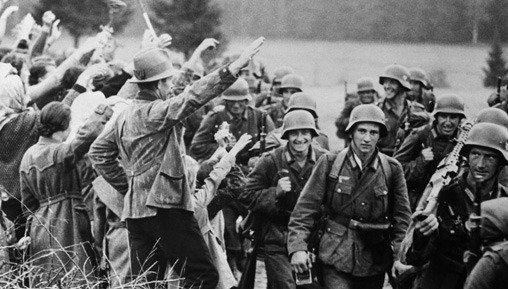
German troops enter Czechoslovakia. They are being greeted with Nazi salutes by some of the countrys German minority.
Germany Invades Poland
1 S EPTEMBER 1939
At 4.45 a.m., German tanks, infantry, and aircraft surged across the frontiers into Poland and began an all-out attack. Britain and France demanded a German withdrawal, and when Hitler failed to respond, they declared war. Australia, New Zealand, Canada, and South Africaall members of the British Commonwealthjoined the Allied (Anglo-French) side.
Next page

